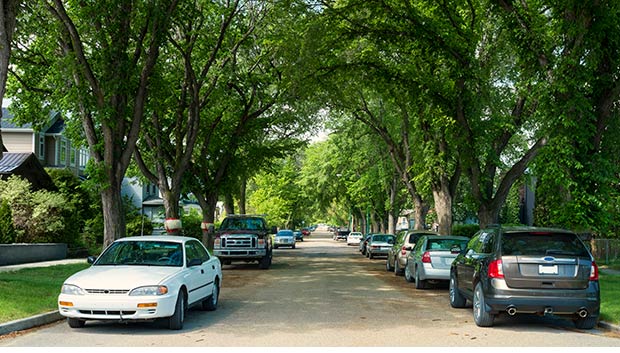LAND prof’s study correlates amount of tree shade with heat-related ambulance calls

Robert Brown
Not only do shady landscapes offer relief from the summer heat, they can also reduce heat-related medical emergencies, according to a study undertaken by Robert Brown, professor of [landscape architecture] (http://laup.arch.tamu.edu) at Texas A&M, and four colleagues.
Their study found that during heat waves, Toronto neighborhoods with higher amounts of tree shade logged fewer heat-related ambulance responses than areas with less shade.
“This finding can support designers, planners, and health officials who advocate planting shade trees and optimizing their growing conditions as design strategies to improve urban dwellers’ health,” said the researchers in a report published August 2016 in [Urban Forestry & Urban Greening] (http://www.journals.elsevier.com/urban-forestry-and-urban-greening) , a journal presenting scholarly research related to planning, design and management of trees and vegetation in urban areas.
Collaborating with Brown on the study were Drew Graham, from the School of Environmental Design and Rural Development at the University of Guelph; Jennifer Vanos, assistant professor of atmospheric science at Texas Tech University, and Natasha A. Kenny, director of the educational development unit at the Taylor Institute for Teaching and Learning.
Urban trees, they wrote, provide many additional benefits — they absorb harmful gases such as carbon monoxide, release oxygen, create a habitat for animals and deliver aesthetic benefits.
The study investigated a total of 18 extreme heat days between 2005 and 2010 as defined by the Toronto Public Health department.
They tracked heat-related ambulance trips before, during and after the selected days using geographic information system-based maps showing the percentage of tree canopy throughout Toronto.
“During these abnormally hot weather periods, Toronto neighborhoods with less than 5% tree canopy cover logged approximately five times as many heat-related ambulance trips as neighborhoods with more canopy cover, and nearly 15 times as many heat-related trips as neighborhoods with greater than 70% canopy cover,” the researchers reported.
Their data suggests that even a marginal increase in tree canopy cover could reduce heat-related ambulance trips by approximately 80%.
The results, the team concluded, have important implications for human health during heat waves, particularly in regard to global climate change, which could cause hotter urban environments in the future.
Previous post
Tags
- climate
- feature
- interdisciplinary
- land development
- land resources
- landscape architecture & urban planning
- planning
- research
- rss
- sustainability
- urban systems
- wellness
Related Posts

GIS software head to keynote Texas A&M GIS Day celebration

Planning prof presents hazard mitigation ideas

GIS Day celebrates utility of ubiquitous geospatial tool

Study eyes how lower Lake Conroe levels impact economy
Follow Us
Facebook Twitter Vimeo Youtube Flickr RSS
Recent Posts

Planning prof heads study of disaster housing aid

A message from the dean

Former student remembered as expert planner

Leading educator named new head of Architecture Dept.






_thumbnail_small.png)
